How do you change wheel bearings on a trailer?
Date Posted:28 February 2024
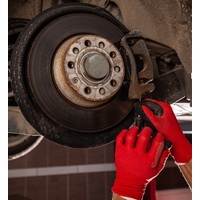
Introduction: The Importance of Trailer Wheel Bearings
Trailer wheel bearings may not be the most glamorous part of your trailer. Still, they play a crucial role in its overall performance and safety. Understanding their purpose, proper maintenance, and consequences of neglecting them is essential for every trailer owner.
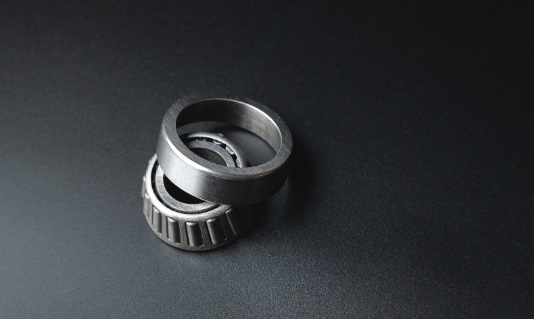
Overview of Trailer Wheel Bearings
Trailer wheel bearings are small, metal components that allow the wheels to rotate smoothly on the axle. They are designed to withstand heavy loads and ensure frictionless movement, reducing wear and tear on the bearings and tyres.
In simple terms, wheel bearings bridge the stationary axle and the rotating wheel, enabling smooth rotation without excessive heat or friction. They are typically made of high-quality steel or ceramic materials to withstand the demanding towing conditions.
The Importance of Proper Maintenance and Replacement
Proper maintenance and timely replacement of trailer wheel bearings are critical for several reasons:
-
Optimal Performance: Well-maintained wheel bearings contribute to smooth and efficient towing. When these bearings are in good condition, they reduce rolling resistance, ensuring better fuel efficiency and overall performance.
-
Safety: Faulty or worn-out bearings can lead to hazardous situations on the road. They can cause instability, excessive heat buildup, and even wheel detachment. Maintaining and replacing wheel bearings as needed can help prevent accidents and keep yourself and others safe.
-
Cost Savings: Neglecting wheel bearing maintenance can result in more significant issues down the line. If unchecked, worn-out bearings can damage other components, such as the axle or hub, leading to expensive repairs or replacements. Regular maintenance and timely replacement can save you money in the long run.
The Consequences of Neglecting Wheel Bearing Maintenance
Ignoring wheel bearing maintenance can have serious consequences. Here are a few examples of what can happen when these crucial components are neglected:
-
Increased Friction and Heat: Lack of proper lubrication and maintenance can cause increased friction between the bearings, resulting in excessive heat buildup. This can lead to premature wear, bearing failure, and potential tyre blowouts.
-
Uneven Tyre Wear: When wheel bearings are worn or damaged, they can cause uneven tyre wear. This is often indicated by one side of the tyre wearing out faster. Uneven tyre wear compromises safety and reduces tyre lifespan.
-
Noise and Vibration: Neglected wheel bearings may produce unusual noises such as grinding, humming, or squealing. These noises can be an early warning sign of bearing failure and should not be ignored. Additionally, worn-out bearings can cause vibrations that affect the overall smoothness of your trailer's ride.
To ensure safe and trouble-free towing, it's crucial to prioritise regular maintenance and timely replacement of trailer wheel bearings.
Identifying Signs of Worn or Faulty Trailer Wheel Bearings
Regarding trailer wheel bearings, early detection of any issues is critical to preventing further damage and ensuring safe towing. By understanding the common signs of worn or faulty bearings, you can take prompt action and avoid potential accidents on the road.
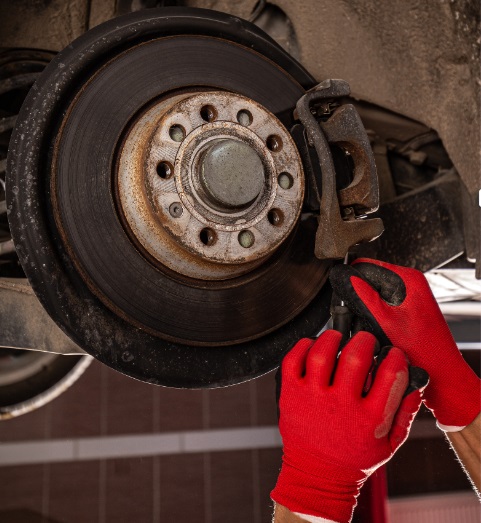
Common Symptoms of Bad Wheel Bearings
-
Unusual Noises: One of the most noticeable signs of worn wheel bearings is a persistent grinding, humming, or growling noise from the wheels. This noise may increase in intensity when you accelerate or make turns.
-
Excessive Heat: Touching the hub assembly after a short drive can indicate potential bearing problems. If the hub feels excessively hot to the touch, it could be a sign that the bearings are not correctly lubricated or damaged.
-
Uneven Tyre Wear: Another clue to worn wheel bearings is uneven tyre wear. If you notice that the tread on your tyres is wearing down unevenly, it could indicate that the bearings are not allowing the wheels to rotate smoothly.
These symptoms should not be ignored as they can lead to more severe issues such as wheel detachment or axle damage. If you experience any of these signs, it's crucial to inspect your trailer's wheel bearings as soon as possible.
Importance of Regular Inspection
Routine inspections are vital in maintaining the performance and longevity of your trailer's wheel bearings. By catching problems early on, you can prevent costly repairs and ensure safe towing experiences.
Regular inspections allow you to:
-
Detect Wear and Damage: Inspecting your trailer's wheel bearings regularly helps you identify any signs of wear or damage before they escalate into more severe issues. This allows you to address the problem promptly and avoid potential breakdowns.
-
Save Time and Money: By catching problems early, you can address them with minor repairs or adjustments rather than waiting until they become major issues. This can save you both time and money in the long run.
-
Maintain Optimal Performance: Properly maintained wheel bearings ensure that your trailer's wheels rotate smoothly, reducing friction and minimising strain on other components. This not only improves performance but also extends the lifespan of your bearings.
To help you stay on top of maintenance, here's a checklist for inspecting your trailer's wheel bearings:
-
Start by jacking up the trailer and ensuring it is properly secured.
-
Remove the wheel and hub assembly to access the bearings.
-
Clean the hub assembly thoroughly, removing any old grease or debris.
-
Inspect the bearings for signs of wear, such as pitting, scoring, or discolouration.
-
Check the bearing races for any damage or irregularities.
-
Ensure that the bearings rotate smoothly without any excessive play.
-
If necessary, repack the bearings with fresh grease and reinstall them.
By following this checklist regularly, you can maintain the health of your trailer's wheel bearings and enjoy safe towing adventures.
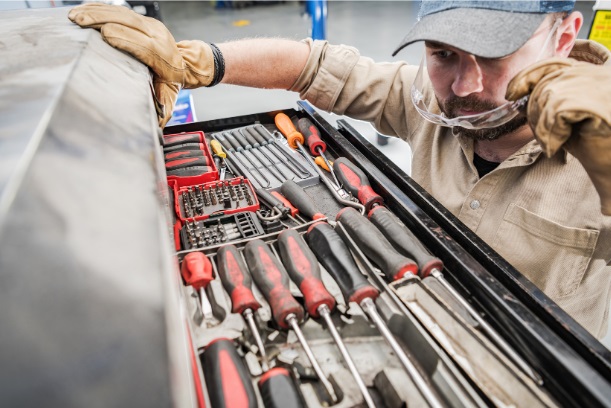
Gathering the Necessary Tools and Materials
Before you begin the process of changing your trailer wheel bearings, it's essential to gather all the necessary tools and materials. Having everything on hand will ensure a smooth and efficient replacement process. Here is a comprehensive list of tools required for the job:
-
Screwdrivers (Flathead and Phillips)
-
Bearing race installer
-
Bearing race remover
Each tool serves a specific purpose in the wheel bearing replacement process. Let's take a closer look at their functions:
-
The socket set lets you loosen and tighten lug nuts and bolts.
-
A torque wrench ensures you apply the correct torque when tightening the bearings.
-
A bearing packer simplifies the process of evenly distributing grease into the bearings.
-
A grease gun is used to inject fresh grease into the bearings.
-
A hammer may be necessary for loosening stubborn parts or tapping components into place.
-
Pliers are handy for removing retaining clips or cotter pins.
-
Screwdrivers are versatile tools that can assist in prying off caps or seals.
-
A bearing race installer helps properly seat new bearing races.
-
A bearing race remover is used to remove old bearing races safely.
-
Brake cleaner is essential for degreasing and cleaning components.
-
A rubber mallet allows for gentle tapping without damaging delicate parts.
-
A wire brush removes stubborn dirt, rust, or debris from surfaces.
-
Shop rags are useful for removing grease, oil, or excess dirt.
-
Safety glasses protect your eyes from potential hazards during the process.
-
Gloves provide hand protection and better grip when handling greasy or sharp objects.
Using high-quality replacement bearings and related components is crucial when replacing trailer wheel bearings. Investing in reputable brands or suppliers ensures you get reliable and durable materials. Here's why using quality materials matters:
-
Performance: High-quality bearings and components are designed to withstand the demands of towing and provide smooth and efficient operation.
-
Durability: Inferior materials may wear out quickly, leading to premature failures and costly repairs.
-
Safety: Using subpar materials can compromise the integrity of your trailer's wheel bearings, increasing the risk of accidents or breakdowns on the road.
For optimal performance and peace of mind, consider purchasing replacement bearings and related components from trusted suppliers specialising in trailer parts. They can provide expert guidance and ensure you get the right parts for your specific trailer model.
Now that you clearly understand the necessary tools and the significance of using quality materials, you're ready to move on to the next steps in the wheel bearing replacement process.
Preparing the Trailer for Wheel Bearing Replacement
.jpg)
Lifting and Securing the Trailer
Before starting the wheel bearing replacement process, lifting and securing the trailer properly is crucial. Following these step-by-step instructions will ensure a safe and accident-free experience:
-
Find a flat and stable surface to park your trailer.
-
Use a hydraulic jack or a trailer-specific lifting device to raise the trailer off the ground if available. Make sure to appropriately position the jack or lifting device on the trailer frame.
-
Place sturdy jack stands under the frame near the wheels to provide additional support and stability.
-
Lower the trailer onto the jack stands and double-check that it rests securely on them.
-
Gently rock the trailer back and forth to ensure stability before proceeding with any work.
Remember, stability is key when lifting a trailer. Preventing accidents and maintaining a safe working environment throughout the wheel bearing replacement process is essential. If you're unsure about lifting or securing the trailer on your own, don't hesitate to seek assistance from a professional or someone experienced in trailer maintenance.
Removing the Wheel and Hub Assembly
You'll need to remove the wheel and hub assembly from the trailer axle to access and replace the wheel bearings. Follow these detailed instructions:
-
Start by loosening the lug nuts on the wheel using an appropriate-sized lug wrench. Loosen them just enough to make removal easier later on.
-
Place wheel chocks behind or in front of the opposite wheel to prevent accidental rolling.
-
With the lug nuts loosened, use a jack to raise the trailer wheel off the ground. Position the jack under the trailer axle or frame near the removed wheel.
-
Once the wheel is off the ground, remove the lug nuts and carefully remove the tyre.
-
Inspect the hub assembly for visible damage or excessive wear. Look for signs of rust, cracks, or loose components. If any issues are detected, the entire hub assembly may need to be replaced.
-
Disconnect the hub assembly from the trailer axle by removing any retaining clips or bolts that secure it in place. Refer to your trailer's manual or consult an expert if you're unsure about the specific removal process for your trailer model.
During this process, taking necessary precautions and following safety measures to avoid injury is important. Always refer to your trailer's manual for manufacturer-specific guidance and recommendations.
Removing and Installing Trailer Wheel Bearings
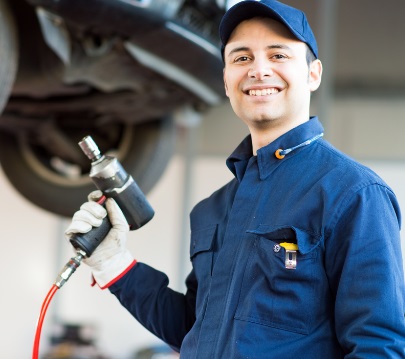
Cleaning and Inspecting the Hub Assembly
Cleaning and inspecting the hub assembly is crucial when changing trailer wheel bearings. By ensuring a clean and properly functioning hub assembly, you can help extend the lifespan of your new wheel bearings. Here's how to do it:
-
Start by removing the hub assembly from the trailer axle. This may require loosening lug nuts, removing the tire, and disconnecting the hub assembly.
-
Once the hub assembly is removed, use a suitable solvent or degreaser to clean off the old grease. Ensure that all parts of the assembly, including the inner and outer races, rollers or balls, and bearing cages, are thoroughly cleaned.
-
Inspect the hub assembly for damage or wear. Look for cracks, pitting, or excessive metal wear. If you notice any issues, replace the damaged parts before proceeding.
-
Check the condition of the races and rollers or balls. Look for signs of scoring or roughness that may indicate wear. If any components appear damaged or worn, they should be replaced.
-
Once everything is cleaned and inspected, dry the hub assembly thoroughly before moving on to the next step.
By cleaning and inspecting the hub assembly, you can ensure that your new wheel bearings have a solid foundation for optimal performance.
Replacing the Wheel Bearings
Now that you have a clean hub assembly, it's time to replace the wheel bearings. Follow these step-by-step instructions:
-
Begin by packing the new wheel bearings with high-quality grease. Place a generous amount of grease in the palm of your hand and press the wider end of the bearing into it until it emerges from the other side. Repeat this process until the entire bearing is packed with grease.
-
When the wheel bearings are properly packed, carefully place them into the hub assembly. Ensure that you position them correctly, with the larger bearing at the outer end and the smaller bearing closer to the centre of the assembly.
-
Once the bearings are in place, you can reinstall any necessary seals or dust caps. These components help protect the bearings from dirt, water, and other contaminants.
-
Tighten the bearings to the manufacturer's specified torque using a torque wrench. This will ensure they are properly secured without being too tight or loose.
It's important to note that over-tightening or under-tightening the bearings can lead to premature wear and potential failure. Following the torque specifications provided by the manufacturer is crucial for safe and reliable operation.
Remember, when replacing wheel bearings, it's essential to use high-quality replacement bearings and related components. Using subpar materials can affect performance and durability, compromising your trailer's safety.
Reassembling the Trailer Wheel and Hub Assembly
Now that the old wheel bearings have been replaced, it's time to reassemble the trailer wheel and hub assembly. This step is crucial in ensuring proper functionality and safety while towing. Follow these instructions carefully to complete the reassembly process:
Reinstalling the Hub Assembly
To begin, align the hub assembly onto the trailer axle. Make sure it sits flush and secure before proceeding with the following steps:
-
Tighten the bolts or nuts that hold the hub assembly in place. Use a torque wrench to ensure they are tightened to the manufacturer's specifications.
-
Check for proper alignment of the hub assembly. It should be centred on the axle and rotate smoothly without any obstructions.
-
If your trailer has additional steps or precautions for reassembling the hub assembly, refer to its specific manual or guidelines.
Mounting the Tire and Testing
With the hub assembly securely in place, it's time to mount the tyre back onto the wheel assembly. Follow these steps to complete this final stage of reassembly:
-
Position the tyre onto the wheel assembly and align it with the lug bolt holes.
-
Tighten the lug nuts by hand in a crisscross pattern to ensure even tightening.
-
Using a torque wrench, tighten the lug nuts to the recommended torque specification provided by the trailer or wheel manufacturer.
-
Once all lug nuts are properly tightened, conduct a thorough test to ensure the wheel bearings function correctly. This can be done by rotating the tire manually and listening for any unusual noises or vibrations.
Remember, proper tightening of lug nuts is crucial for safe towing. Ensure they are securely fastened to prevent accidents or wheel instability while on the road.
Congratulations! After replacing the wheel bearings, you have successfully reassembled the trailer wheel and hub assembly. This step is essential in maintaining the integrity and safety of your trailer during towing.
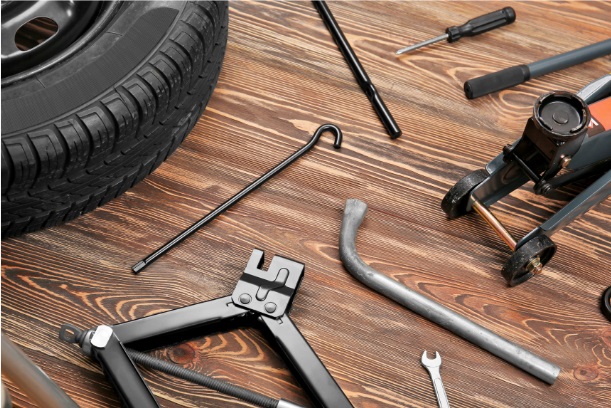
Maintenance Tips and Best Practices for Trailer Wheel Bearings
Proper maintenance of trailer wheel bearings is crucial for ensuring safe and reliable towing. Regular inspections, correct greasing techniques, and appropriate storage practices can significantly extend the lifespan of your bearings. Here are some tips and best practices to keep in mind:
1. Importance of Regular Maintenance
Regular maintenance is vital in maximising the performance and longevity of your trailer wheel bearings. By inspecting and regreasing them at recommended intervals, you can prevent premature wear and potential breakdowns on the road. Here's why regular maintenance matters:
-
Extends bearing lifespan: Frequent inspections and regreasing help minimise friction and reduce the risk of overheating, which can lead to bearing failure.
-
Promotes smooth operation: Well-maintained bearings ensure smooth wheel rotation, enabling your trailer to tow efficiently without unnecessary strain.
-
Saves time and money: By addressing any issues early on, you can avoid costly repairs or replacements later. Regular maintenance is a proactive approach that can prevent unexpected breakdowns.
2. Proper Greasing Techniques
Greasing trailer wheel bearings are a critical part of maintenance that shouldn't be overlooked. Follow these proper greasing techniques to ensure optimal performance:
-
Use the proper grease: Choose a high-quality, lithium-based grease formulated explicitly for trailer wheel bearings. This type of grease provides excellent protection against heat, water, and heavy loads.
-
Clean before greasing: Before applying fresh grease, thoroughly clean the old grease from the hub assembly using a suitable solvent or degreaser. This step helps remove contaminants that could compromise the new grease's effectiveness.
-
Pack bearings evenly: Apply grease to the palm of your hand and push the edge of the bearing into it, forcing the grease between the rollers. Rotate the bearing while adding grease until it is evenly distributed throughout.
-
Grease seals: Don't forget to inspect and replace worn or damaged grease seals during the greasing process. These seals help keep grease in and contaminants out, protecting your bearings.
-
Don't over grease: While it's important to ensure proper lubrication, avoid overgrazing as it can lead to excessive heat buildup and potential seal failure. Follow manufacturer guidelines for the appropriate amount of grease to be used.
3. Trailer Storage and Bearing Protection
Proper storage practices are essential for preserving the condition of your trailer wheel bearings, especially during periods of inactivity. Follow these best practices:
-
Use covers: When your trailer is not in use, consider using a cover to protect it from dust, debris, and moisture. This helps prevent corrosion and keeps your bearings clean.
-
Jack up the trailer: If storing it for an extended period, consider jacking it up so that the weight is off the wheels. This helps alleviate pressure on the bearings, reducing the risk of flat spots or deformation.
-
Apply rust inhibitors: Apply a rust inhibitor or protective coating to exposed metal surfaces, including the wheel hubs and axles. This additional layer of protection helps guard against rust and corrosion.
-
Keep bearings clean and dry: Before storing your trailer, make sure the bearings are clean and free of any moisture. Moisture can cause rust and damage over time. Use compressed air or a clean cloth to dry the bearings if necessary.
Following these maintenance tips and best practices ensures that your trailer wheel bearings remain in optimal condition, providing you with safe and trouble-free towing experiences. Regular inspections, proper greasing techniques, and appropriate storage practices are key to keeping your trailer rolling smoothly.
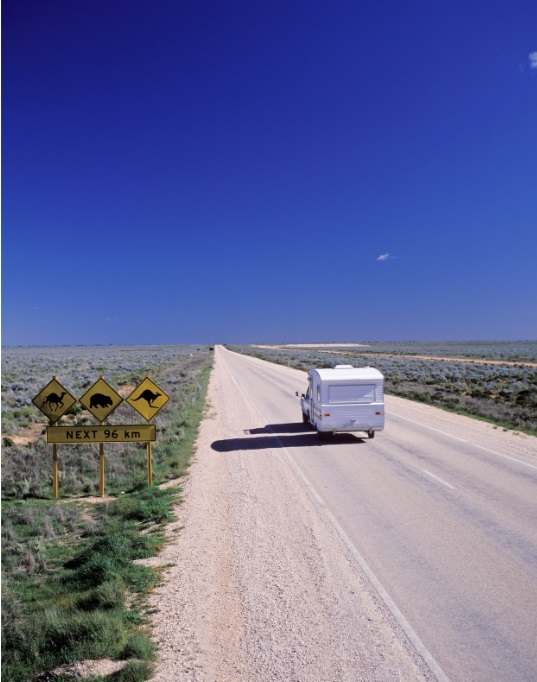
Conclusion: Ensuring Safe and Reliable Trailer Operation
Changing trailer wheel bearings is a crucial maintenance task that should not be overlooked. Following the proper steps and taking proactive measures can ensure safe and reliable trailer operation for years. Here's a summary of the key points to remember:
Summary of Wheel Bearing Replacement Process
-
Recap the key steps involved in changing trailer wheel bearings: lifting and securing the trailer, removing the wheel and hub assembly, cleaning and inspecting the hub assembly, replacing the wheel bearings, and reassembling the trailer and hub assembly.
-
Emphasise the importance of regular maintenance for safe towing. Regular inspections and timely replacement of worn or faulty bearings can prevent accidents and costly repairs.
-
Reiterate the significance of promptly addressing worn or faulty bearings. Ignoring signs of bad wheel bearings can lead to further damage, compromised safety, and potential road breakdowns.
Promoting Safe Trailer Operation
-
Provide additional tips for ensuring overall trailer safety while on the road. Proper loading techniques, such as distributing weight evenly and securing cargo, are essential for maintaining stability during towing.
-
Discuss the importance of tire maintenance, including regular inspections for wear and proper inflation. Well-maintained tires contribute to better handling and reduce the risk of blowouts.
-
Encourage readers to prioritise trailer maintenance for trouble-free towing. By following a recommended maintenance schedule, which includes regular inspections, greasing, and storage precautions, you can extend the lifespan of your trailer's wheel bearings.
Remember, taking care of your trailer's wheel bearings is not only about ensuring smooth travels but also about prioritising the safety of yourself and others on the road. By implementing these maintenance practices and staying proactive, you can enjoy worry-free towing experiences and extend the lifespan of your trailer's wheel bearings.





